Abstract
The polarization of fluorescence from diphenyl hexatriene embedded in the membranes of intact peripheral-blood mononuclear cells has been measured and used to assess the "microviscosity" or fluidity of the membrane. Cell preparations were examined from patients with various types of leukaemia and related conditions in which circulating primitive cells may occur. Significantly lower fluorescence polarization values were obtained in all samples from patients with chronic lymphocytic leukaemia, but normal results were obtained in cases of chronic granulocytic leukaemia, myelosclerosis, solid lymphomas and in acute leukaemias in remission. In relapsed acute leukaemia, fluorescence polarization indicated reduced "microviscosity" of the cell membrane when large numbers (greater than 10(9)/1) of primitive cells were present; normal "microviscosity" was indicated when less than 10(9)/1 primitive cells were present. However, exceptions occurred in both cases, and the technique failed to give warning of imminent relapse in one case. Our findings suggest that a reduction in "microviscosity" as indicated by this technique is not a general property of the blood leucocytes in all types of leukaemia, and that the technique cannot, at present, be regarded as an alternative method for detecting circulating primitive cells.
Full text
PDF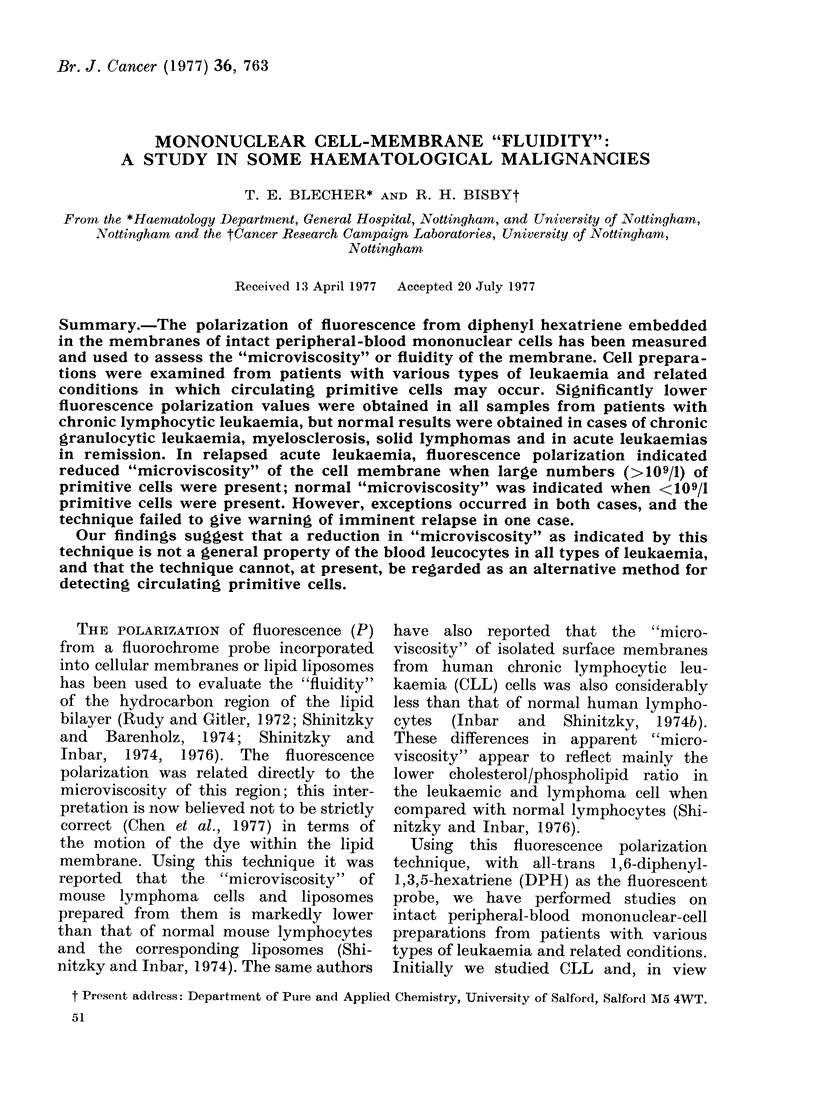
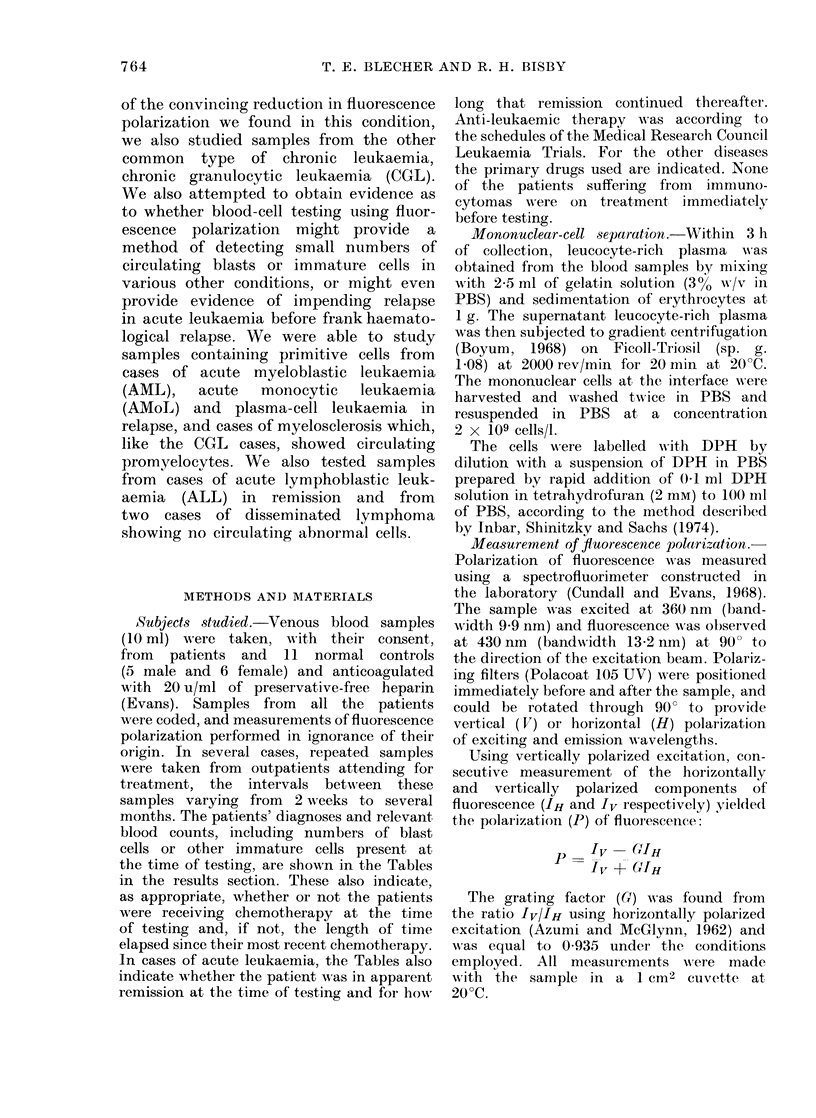
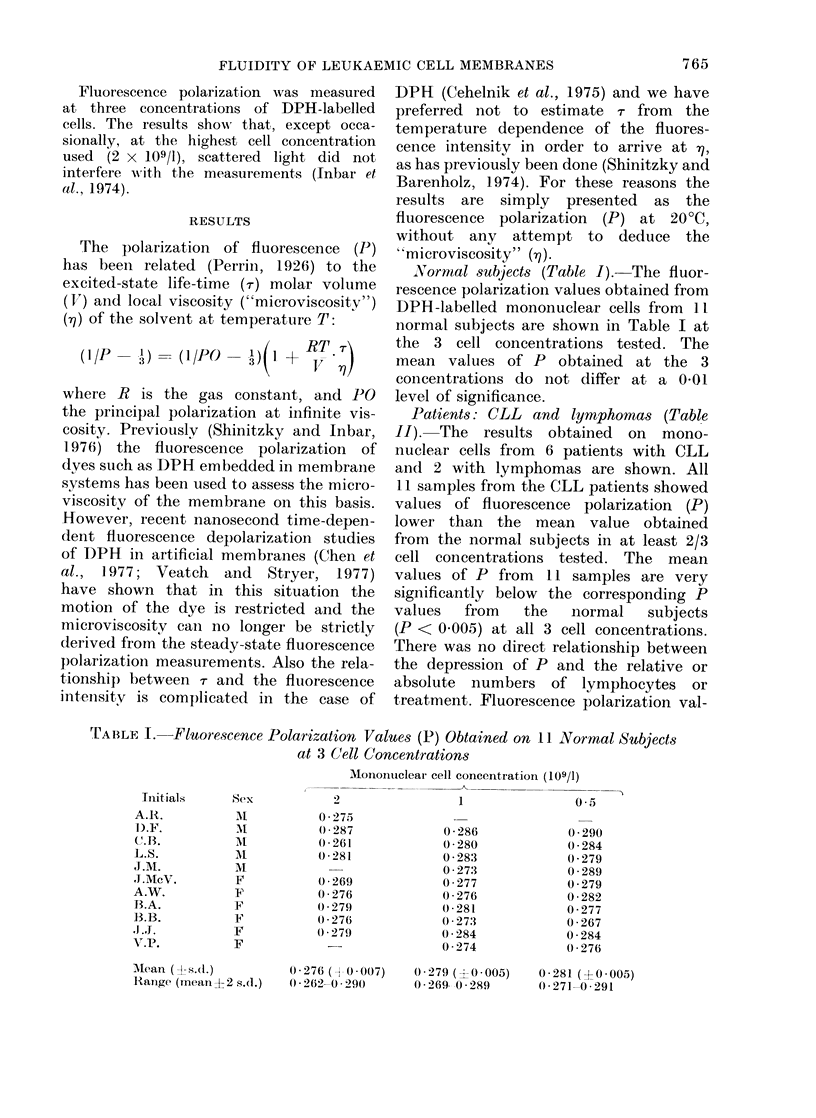
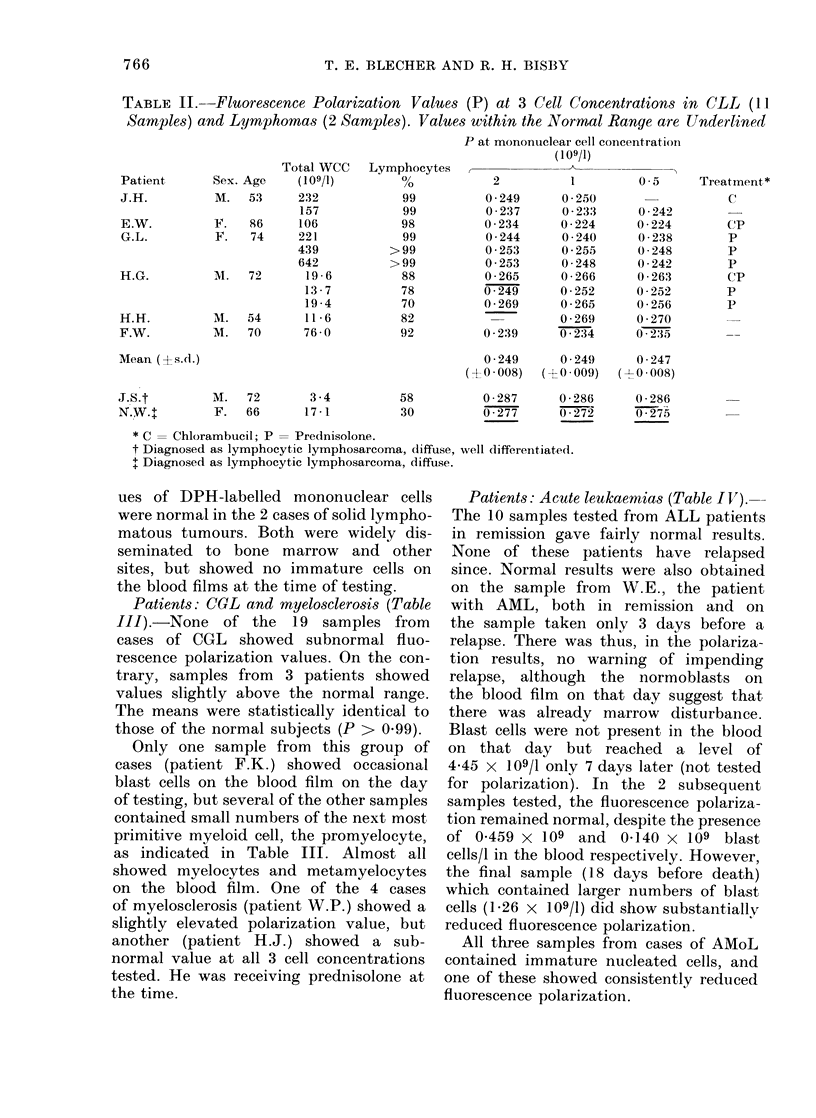
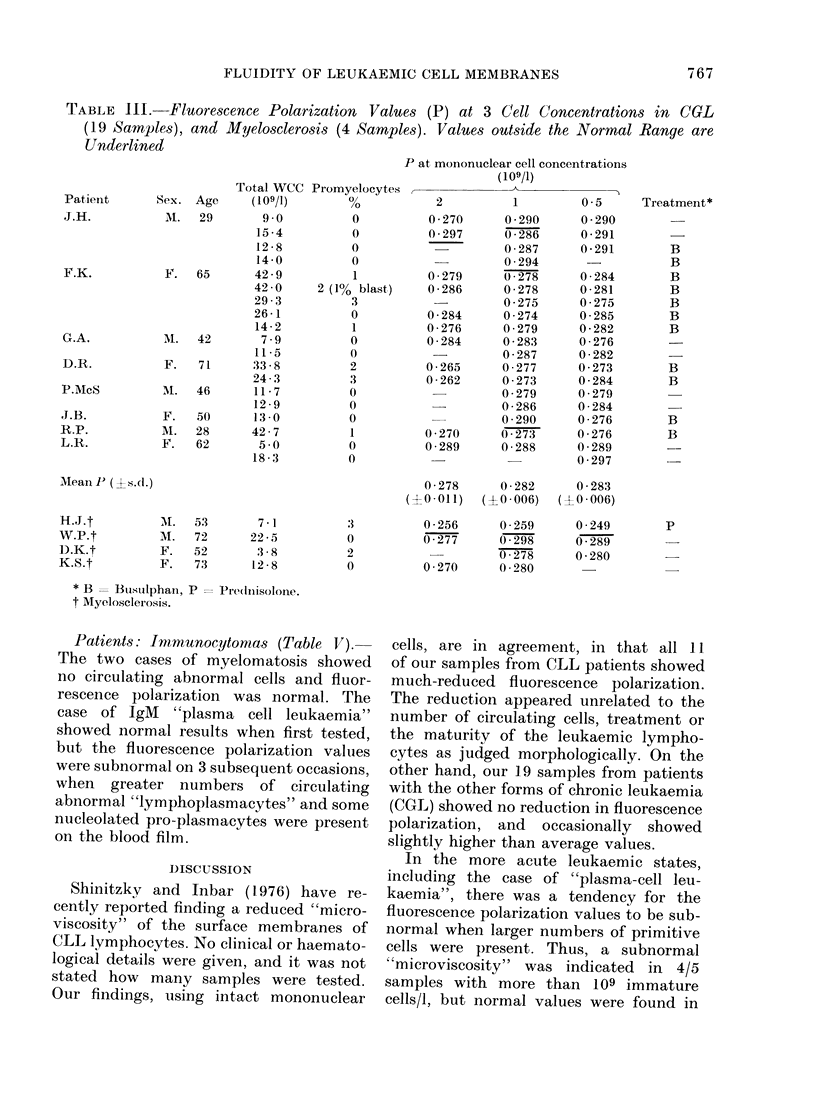
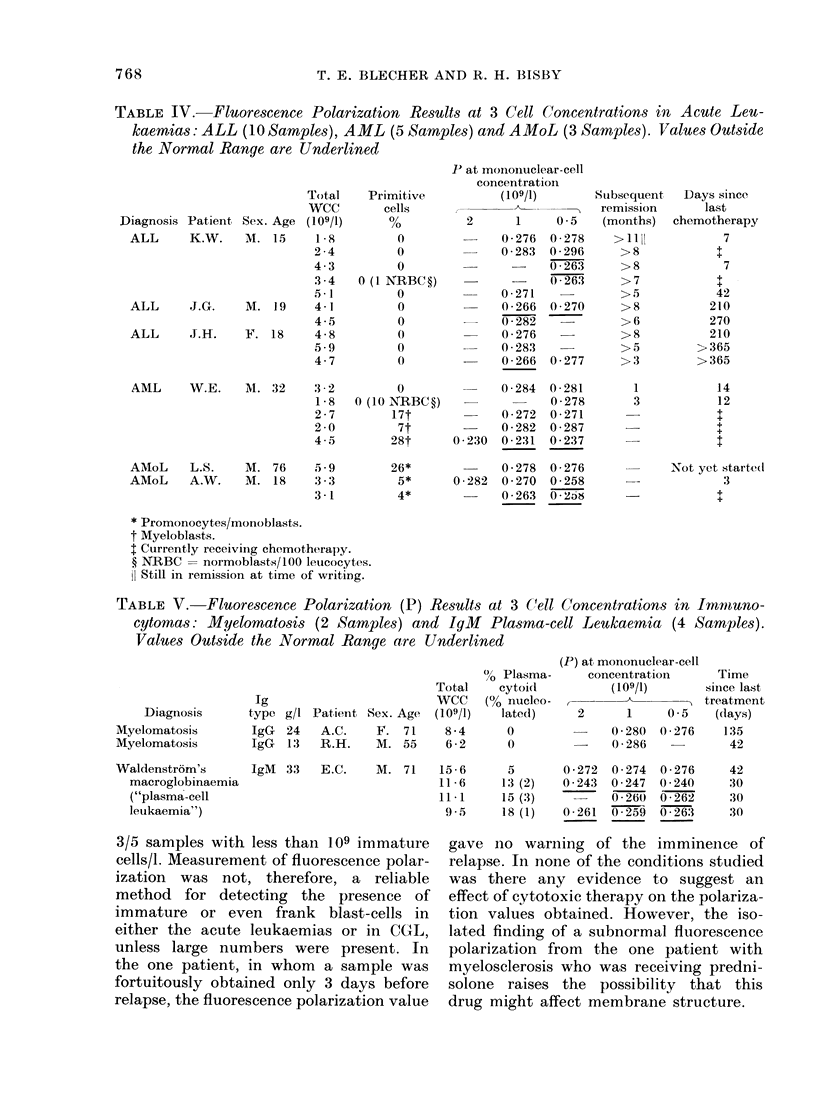
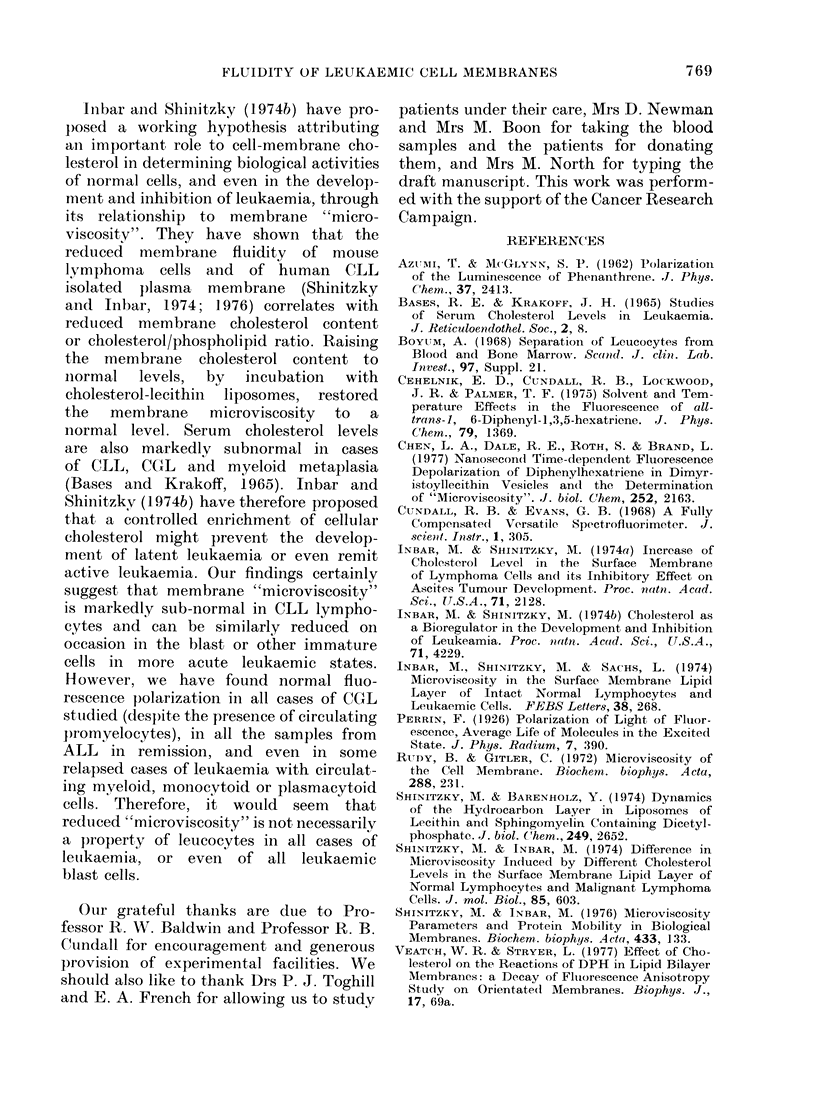
Selected References
These references are in PubMed. This may not be the complete list of references from this article.
- BASES R. E., KRAKOFF I. H. STUDIES OF SERUM CHOLESTEROL LEVELS IN LEUKEMIA. J Reticuloendothel Soc. 1965 May;2:8–14. [PubMed] [Google Scholar]
- Chen L. A., Dale R. E., Roth S., Brand L. Nanosecond time-dependent fluorescence depolarization of diphenylhexatriene in dimyristoyllecithin vesicles and the determination of "microviscosity". J Biol Chem. 1977 Apr 10;252(7):2163–2169. [PubMed] [Google Scholar]
- Cundall R. B., Evans G. B. A fully compensated versatile spectrofluorimeter. J Sci Instrum. 1968 Mar;1(3):305–310. doi: 10.1088/0022-3735/1/3/309. [DOI] [PubMed] [Google Scholar]
- Inbar M., Shinitzky M. Cholesterol as a bioregulator in the development and inhibition of leukemia. Proc Natl Acad Sci U S A. 1974 Oct;71(10):4229–4231. doi: 10.1073/pnas.71.10.4229. [DOI] [PMC free article] [PubMed] [Google Scholar]
- Inbar M., Shinitzky M. Increase of cholesterol level in the surface membrane of lymphoma cells and its inhibitory effect on ascites tumor development. Proc Natl Acad Sci U S A. 1974 May;71(5):2128–2130. doi: 10.1073/pnas.71.5.2128. [DOI] [PMC free article] [PubMed] [Google Scholar]
- Inbar M., Shinitzky M., Sachs L. Microviscosity in the surface membrane lipid layer of intact normal lymphocytes and leukemic cells. FEBS Lett. 1974 Jan 15;38(3):268–270. doi: 10.1016/0014-5793(74)80069-4. [DOI] [PubMed] [Google Scholar]
- Rudy B., Gitler C. Microviscosity of the cell membrane. Biochim Biophys Acta. 1972 Oct 23;288(1):231–236. doi: 10.1016/0005-2736(72)90242-8. [DOI] [PubMed] [Google Scholar]
- Shinitzky M., Barenholz Y. Dynamics of the hydrocarbon layer in liposomes of lecithin and sphingomyelin containing dicetylphosphate. J Biol Chem. 1974 Apr 25;249(8):2652–2657. [PubMed] [Google Scholar]
- Shinitzky M., Inbar M. Difference in microviscosity induced by different cholesterol levels in the surface membrane lipid layer of normal lymphocytes and malignant lymphoma cells. J Mol Biol. 1974 Jan 5;85(4):603–615. doi: 10.1016/0022-2836(74)90318-0. [DOI] [PubMed] [Google Scholar]
- Shinitzky M., Inbar M. Microviscosity parameters and protein mobility in biological membranes. Biochim Biophys Acta. 1976 Apr 16;433(1):133–149. doi: 10.1016/0005-2736(76)90183-8. [DOI] [PubMed] [Google Scholar]


